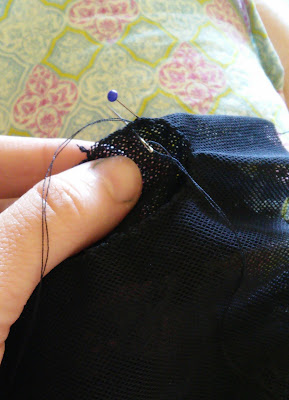Socks, one of the most boring, yet most important articles of clothing. So, while not terribly exciting, when I saw the Dreamstress's tutorial for making Victorian stockings I knew I would have to try making a pair to go with my historical dresses. Thus, along with a headdress and some mitts I made a pair for July's HSM challenge, accessorize.
Then I cut out the stockings, sewed them together and was amazed by how great they turned out! The only issue I had is they are a little short on me, just under the knee rather than above it (apparently I mis-measured) but that's no big deal, and I can easily make them longer next time.
These stockings were incredibly quick and easy to make, now that I have one pair done I intend to make a few more!
The Challenge: #7 Accessorize
Fabric: 95% cotton knit
Pattern: The Dreamstress's Rosalie Stocking Pattern
Year: 18th-early 20th century
Notions: Thread, 1 inch wide elastic
How historically accurate is it? The look is right, though I did use my sewing machine for these. The fabric is mostly cotton, which would be accurate, but is also part spandex. I couldn't find 100% cotton knit sadly.
Hours to complete: Only about an hour. These went together really easily!
First worn: Just for pictures, July 31st
Total cost: The fabric was $5 a yard, and I bought a full yard but only used about a 3rd of a yard, so about $2
These stockings were the perfect way to finish off my ball gown ensemble!
These stockings were the perfect way to finish off my ball gown ensemble!



















































